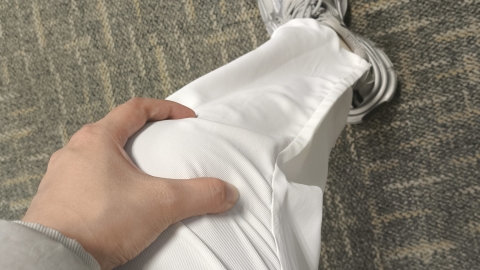What causes leg weakness?
Under normal circumstances, leg weakness may be caused by factors such as excessive fatigue, inadequate nutrition, hypokalemia, lumbar disc herniation, or lower extremity atherosclerotic occlusive disease. It is recommended to seek medical attention promptly, identify the underlying cause, and receive symptomatic treatment under a doctor's guidance. Specific analyses are as follows:

1. Excessive fatigue: Prolonged intense exercise or heavy physical labor can lead to lactic acid buildup in leg muscles, causing a feeling of weakness. Reducing activity, ensuring adequate rest, and appropriately massaging the leg muscles to promote blood circulation can help relieve symptoms.
2. Inadequate nutrient intake: Long-term dieting or unbalanced eating habits may lead to deficiencies in nutrients such as protein and vitamin D, affecting muscle function. Adjust the diet by consuming more lean meat, milk, fruits, and vegetables to ensure sufficient nutrition and improve overall physical condition.
3. Hypokalemia: Caused by insufficient potassium intake or excessive loss, this condition affects muscle contraction and can result in leg weakness and limb numbness. Patients may take medications such as potassium chloride sustained-release tablets, potassium citrate granules, or potassium magnesium aspartate tablets under medical supervision, along with eating potassium-rich foods like bananas and spinach.
4. Lumbar disc herniation: Degeneration or injury of the lumbar spine causes intervertebral disc protrusion, compressing nerve roots and leading to leg weakness and pain. Patients may use medications such as celecoxib capsules, mecobalamin tablets, or mannitol injection as prescribed. In severe cases, surgical removal of the herniated disc may be performed to relieve nerve compression.
5. Lower extremity atherosclerotic occlusive disease: Narrowing or blockage of blood vessels reduces blood supply to the lower limbs, resulting in leg weakness, cold sensations, and intermittent claudication. Patients may take medications such as enteric-coated aspirin tablets, atorvastatin calcium tablets, or cilostazol tablets as directed by a physician. When necessary, lower extremity arterial bypass graft surgery may be performed to restore blood flow to the affected limb.
In daily life, avoid prolonged sitting or standing. Engage moderately in activities such as walking or jogging to strengthen leg muscles. Pay attention to keeping warm and prevent the lower limbs from getting cold. Maintain regular sleep patterns and avoid staying up late to support normal metabolic functions of the body.








